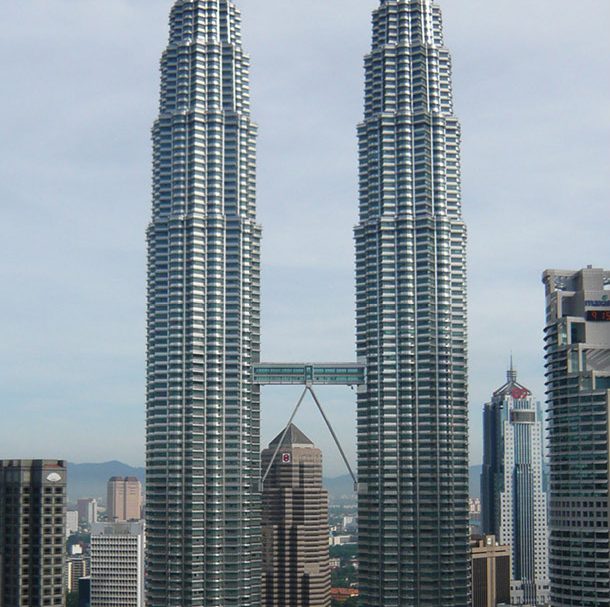On April 15, 1996, the Council on Tall Buildings named the Petronas Towers the tallest in the world, passing the torch to a new continent. Located in Malaysia’s capital city of Kuala Lumpur, they were the first buildings outside the U.S. to hold this title. Architect Cesar Pelli’s design answered the developer’s call to express the “culture and heritage of Malaysia” by evoking Islamic arabesques and employing repetitive geometries characteristic of Muslim architecture.
In plan, an 8-point star formed by intersecting squares is a clear reference to Islamic design; curved and pointed bays create a scalloped facade that suggests temple towers. Other features include a curtain wall of glass and stainless steel sun shades to diffuse the intense equatorial light and a double-decker elevator system with a sky lobby transfer point on the 41st floor to accommodate the thousands of people who use the complex daily. The identical towers are linked by this sky bridge, creating a dramatic gateway to the city. In both engineering and design, the Petronas Towers succeed at embracing the country’s heritage while proclaiming its modernization.
